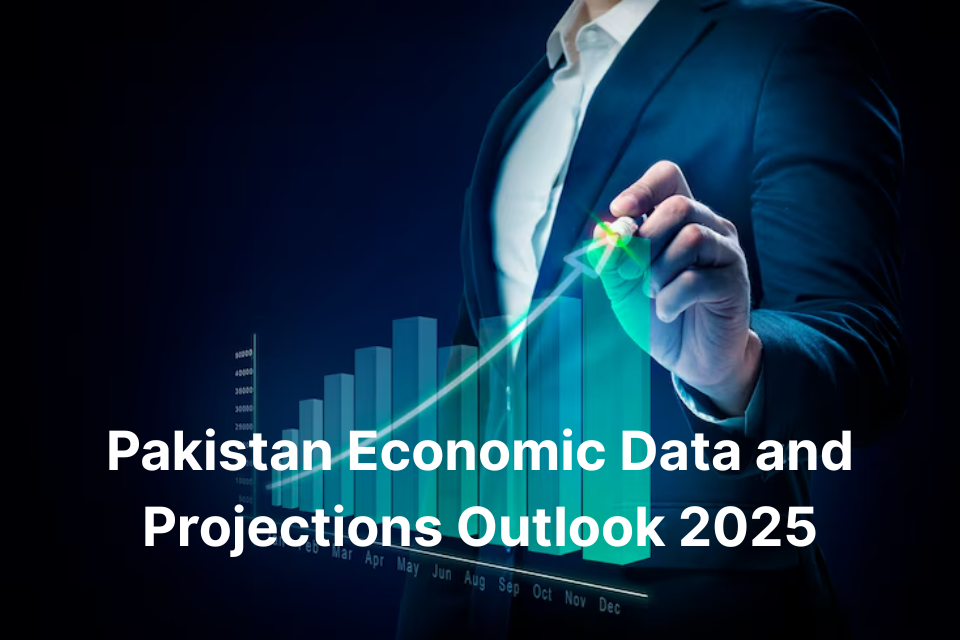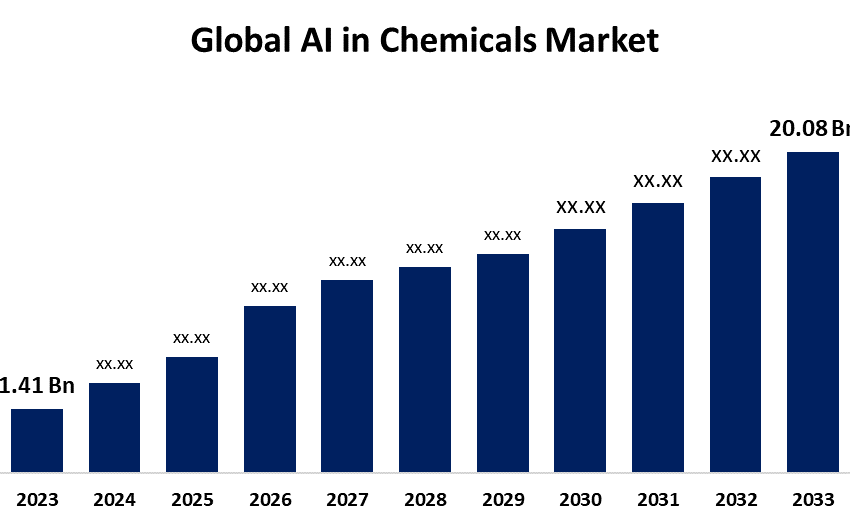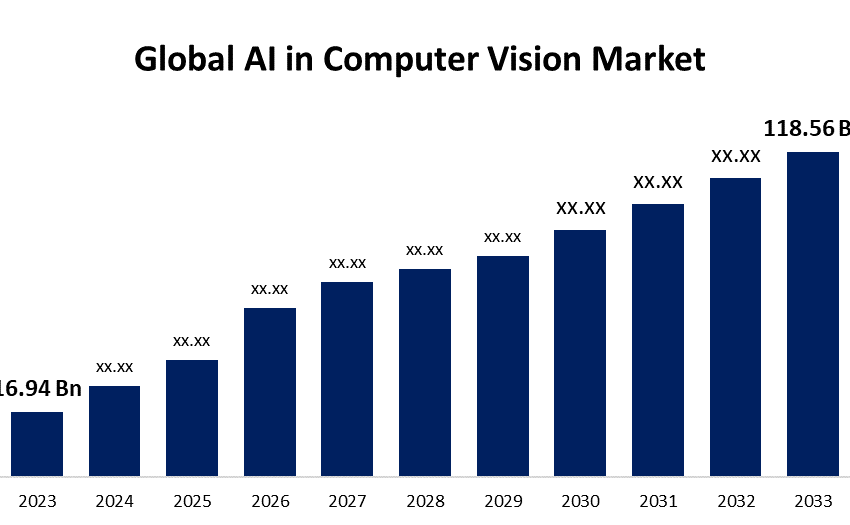Pakistan Economic Data and Projections Outlook 2025 | Economic Statistics and Facts
Introduction
Pakistan enters 2025 facing a complex set of economic challenges rooted in structural inefficiencies, external financing dependencies, and recurring macroeconomic imbalances. The nation’s economic history has been characterized by cycles of expansion and crises, primarily driven by political unpredictability, large fiscal deficits, a limited tax base, and oil shortages. Although key industries like textiles and agriculture have potential for growth, economic prospects remain hindered by low investor confidence, weak foreign reserves, and ongoing inflation.
Pakistan’s per capita income was USD 1,574 in 2024, well below the global average of USD 10,589, despite having a nominal GDP of USD 373 billion and a population of almost 236 million. Even though the nation’s real GDP has grown by an average of 3.5% over the past ten years, it is still susceptible to political unrest, debt problems, and foreign shocks unless significant structural changes are made.
Here’s a concise table showing only the most important economic indicators for Pakistan in 2024:
| Key Indicator | 2024 Value | Insight |
| GDP (USD billion) | 371 | Modest nominal growth |
| GDP per capita (USD) | 1,574 | Low compared to regional peers |
| Real GDP Growth (%) | 2.50% | Weak economic recovery |
| Inflation (CPI, avg %) | 12.60% | High cost of living |
| Exchange Rate (PKR/USD, eop) | 278 | Significant currency depreciation |
| Policy Interest Rate (%) | 13.00% | Tight stance to fight inflation |
| Fiscal Deficit (% of GDP) | -6.80% | High deficit, fiscal stress |
| Tax-to-GDP Ratio (%) | ~9% | Very low compared to regional standards |
| Industrial Production Growth (%) | -1.40% | Reflects continued industrial weakness |
| International Reserves (USD bn) | 18.3 | Modest recovery in external reserves |
| External Debt (% of GDP) | 35.30% | Moderate but sensitive to exchange rate volatility |
The Economic Problems Behind Pakistan’s Crises
Pakistan’s economy is plagued by persistent issues. Its over-reliance on short-term external financing, particularly from the International Monetary Fund (IMF), is a recurring theme in its macroeconomic narrative. Pakistan has engaged in approximately twenty IMF programs in the past two decades. While these agreements provide short-term relief for balance of payments, they fail to tackle long-term structural challenges such as low domestic productivity, ineffective public sector operations, and insufficient tax collection.
The budget deficit remained around 6.8% in 2024, while the public debt was 70.1% of GDP, indicating little room for expansionary fiscal policy. Additionally, defense spending, debt interest payments, and subsidies for the energy sector continue to deprive funds for development, leaving little money for infrastructure improvements and social programs.
Pakistan’s Economy Under Pressure from Inflation and Rupee Slide
Economic policymakers in Pakistan are increasingly concerned about inflation. The nation’s year-end inflation rate was 4.1% in 2024, while the average consumer price inflation (CPI) was 12.6%. The constant devaluation of the Pakistani Rupee, persistent supply chain disruptions, and rising food and gasoline prices were the main causes of this spike. Pakistan’s persistently high inflation over the last five years has had a major impact on real earnings and reduced the purchasing power of households across all income levels. As a result, private consumption, which makes up a staggering 83.4% of the nation’s GDP, has stagnated and consumer confidence has declined, further slowing economic growth.
The Pakistani Rupee has also experienced a significant decline in value, going from PKR 226/USD in 2022 to PKR 278/USD by the end of 2024. In the face of macroeconomic volatility, this decline is a result of growing external payment pressures, dwindling foreign exchange reserves, and waning investor confidence. A lower currency can provide exporters a competitive edge, but it also drives up the cost of imports, especially petroleum and necessities, and increases the burden of repaying external debt, which puts a strain on household budgets and public coffers. Pakistan’s financial stability and economic recovery are still seriously threatened by the twin forces of inflation and currency depreciation.
Sectoral Overview: Services Lead, Agriculture Remains Vital
The services sector still dominates Pakistan’s economy, accounting for about 50.6% of GDP in 2022. This trend probably continued into 2024 despite larger macroeconomic challenges. Ongoing digital transformation and the growth of mobile financial services have helped the services sector, which includes banking, retail, transportation, and telecommunications, to demonstrate relative resilience, especially in urban regions. On the other hand, the agricultural sector, which accounted for 23.4% of GDP in 2022 and is still essential for rural employment and food security, is facing further difficulties. Despite its significance, agriculture has persistent problems such as inadequate water management, low automation, restricted financing availability, and inadequate storage facilities.
Increasing water shortages brought on by tensions with India over the Indus Waters Treaty are further taxing Pakistan’s agricultural industry. Crop yields have suffered, rainfall dependence has grown, and climate hazards like droughts and floods have escalated due to reduced water supply to areas like Punjab and Sindh.
Meanwhile, high energy costs, frequent power outages, and antiquated industrial technology continue to limit manufacturing, which accounted for 13.6% of GDP in 2022. Following a -3.9% drop in 2023, Pakistan’s industrial production shrank by 1.4% in 2024, indicating a prolonged reduction in industrial output due to supply-side limitations and economic uncertainty. Other industrial sectors, such as mining and building, made up about 12.4% of GDP, but they have also slowed as a result of lower investment and growing input costs.
GDP by Expenditure: Consumption-Driven Economy
The services sector dominates Pakistan’s economy in terms of sectoral composition; in 2022, it accounted for 50.6% of GDP. Manufacturing accounted for 13.6%, other industrial activities for 12.4%, and agriculture for 23.4%. Despite its low level of mechanization, antiquated farming methods, and inadequate water infrastructure, the agriculture industry continues to be the foundation of rural employment and food security. In important areas like Punjab and Sindh, seasonal water shortages have further hampered agricultural productivity, in part because of tensions with India over the Indus Waters Treaty.
Meanwhile, high production prices, scarce energy supplies, and antiquated technologies continue to plague the manufacturing sector. Industrial production decreased by 1.4% in 2024 after contracting by 3.9% in 2023, which was a result of continuous supply chain interruptions and energy shortages. However, the services industry, especially banking, retail, and telecommunications, has proven resilient due to urban demand and the uptake of digital technology. To enable sustained growth in any industry, however, structural changes and focused investments are required.
Fiscal and Monetary Policy: Tightening Amid Inflation
The State Bank of Pakistan (SBP) kept a strict monetary policy in 2024 to counteract ongoing inflationary pressures and stabilize the exchange rate. The policy interest rate remained high at 13.00%, which is still high by historical standards but far lower than the 2023 top of 22.00%. Although this conservative approach reduced exchange rate volatility and moderated inflation, it came at a price: it made borrowing more expensive for consumers and businesses. Thus, overall economic activity was dampened as private investment remained muted and credit growth to the private sector decreased.
The administration implemented fiscal austerity measures in terms of the IMF loan. To increase revenue, these included lowering energy subsidies, increasing fuel and power prices, and enacting new tax laws. Despite these initiatives, Pakistan’s tax-to-GDP ratio, which is among the lowest in the region at about 9%, has not changed. The implementation of structural tax reforms, enhanced compliance, and tax net expansion is necessary to alleviate fiscal strains. Without significant changes, Pakistan won’t be able to pay off its debt, lower its fiscal deficit, or fund important social and infrastructural initiatives.
Demographic and Regional Comparison
Pakistan makes up 5.8% of Asia’s total population, which is indicative of its sizable and youthful demographics more than 60% of its people under 30. Pakistan barely makes up 1.2% of the region’s GDP despite this demographic dividend, indicating a stark imbalance between population size and economic performance. In comparison, China and India, which account for 35.3% and 35.2% of Asia’s population, respectively, make up a much greater portion of the region’s GDP (11.8% and 62.8%). Pakistan’s failure to leverage its human resource potential through economic value addition and meaningful employment is demonstrated by this glaring gap.
Pakistan still lags well behind its regional peers, Bangladesh (USD 2,500) and India (USD 2,850), with a GDP per capita of USD 1,574. Low labor productivity and structural inefficiencies are the causes of this income disparity. Limited access to high-quality education, skill development, and innovative infrastructure exacerbates the problems. If Pakistan wants to increase its per capita income, develop its human capital, and become more competitive in the area in the years to come, it must address these weaknesses.


